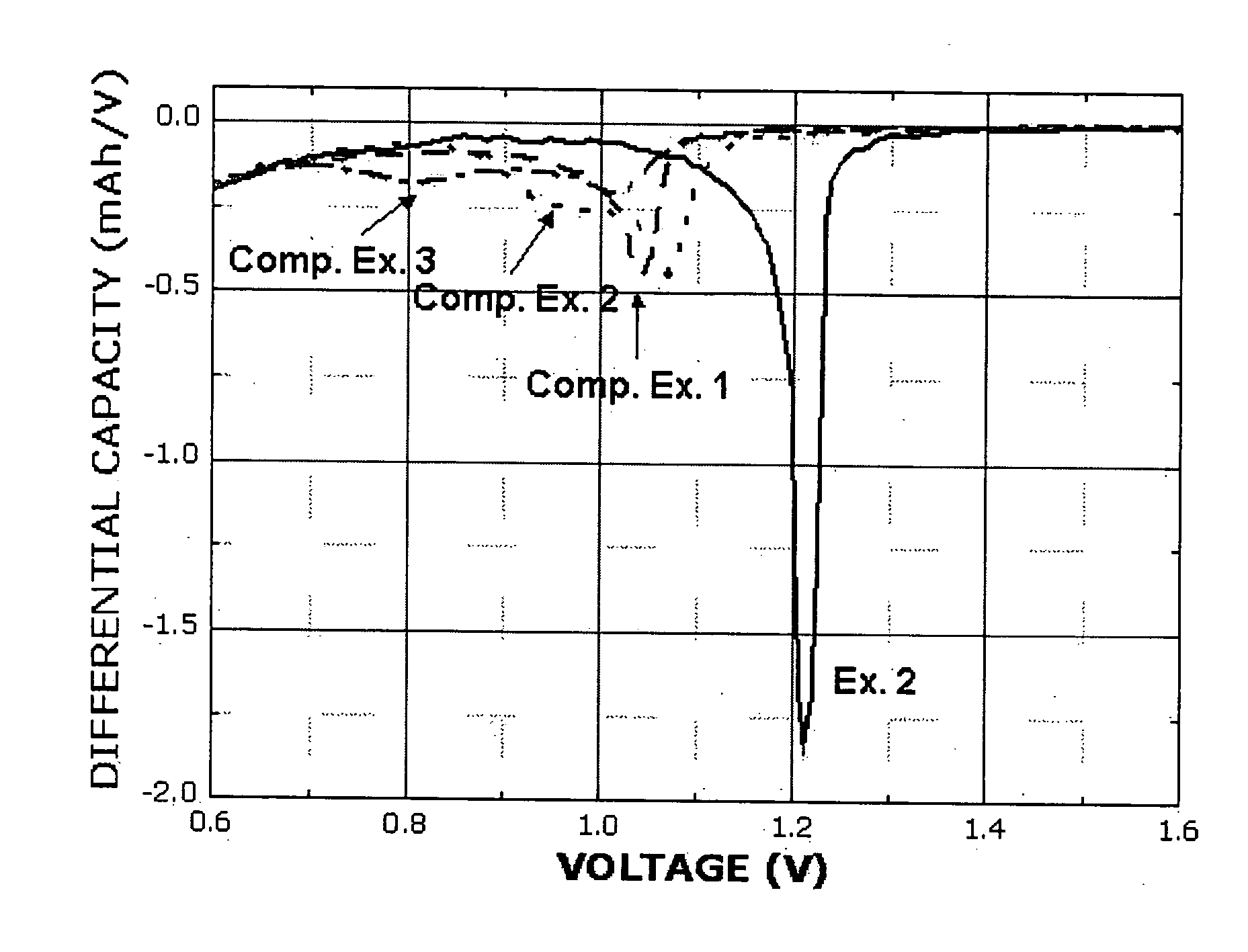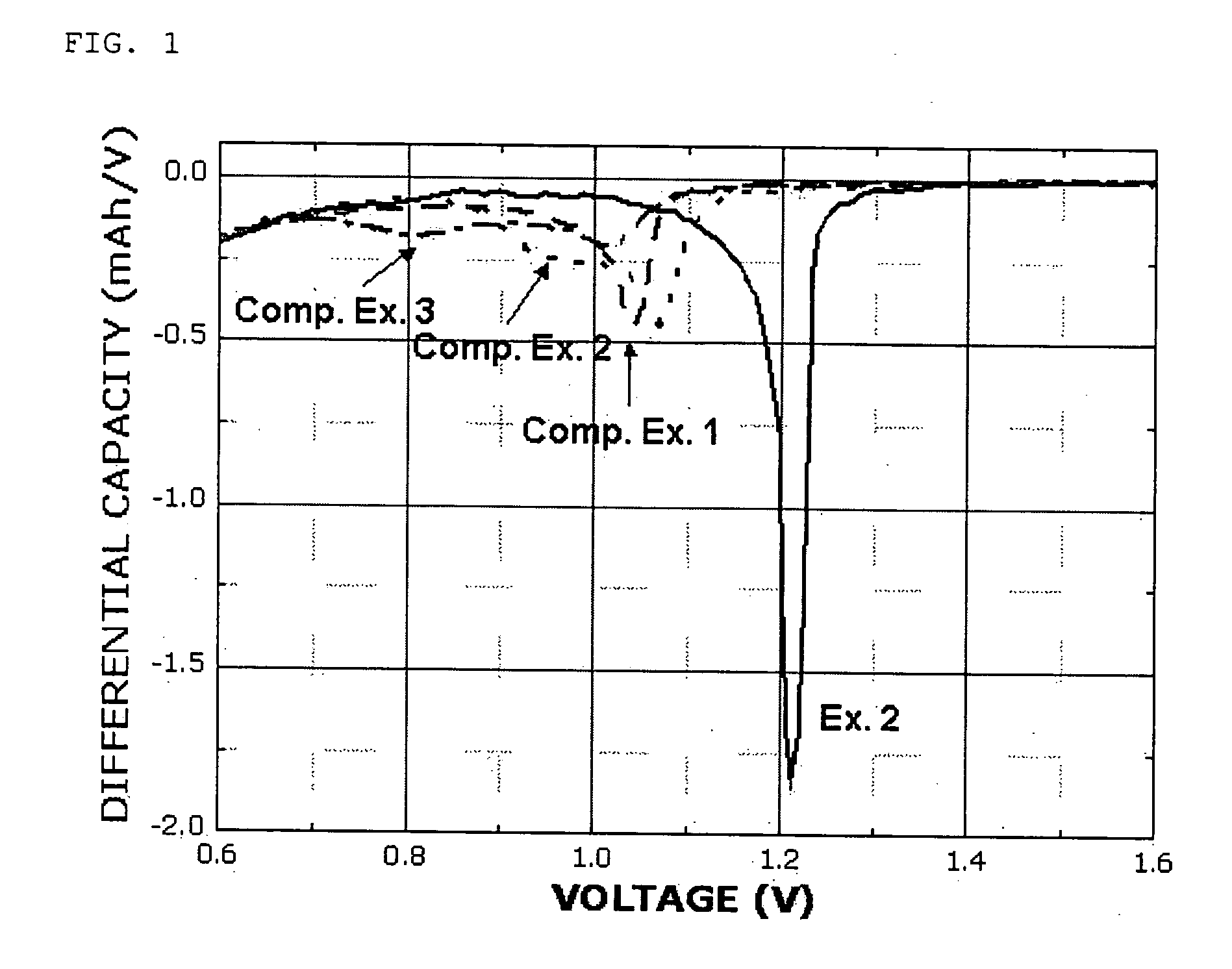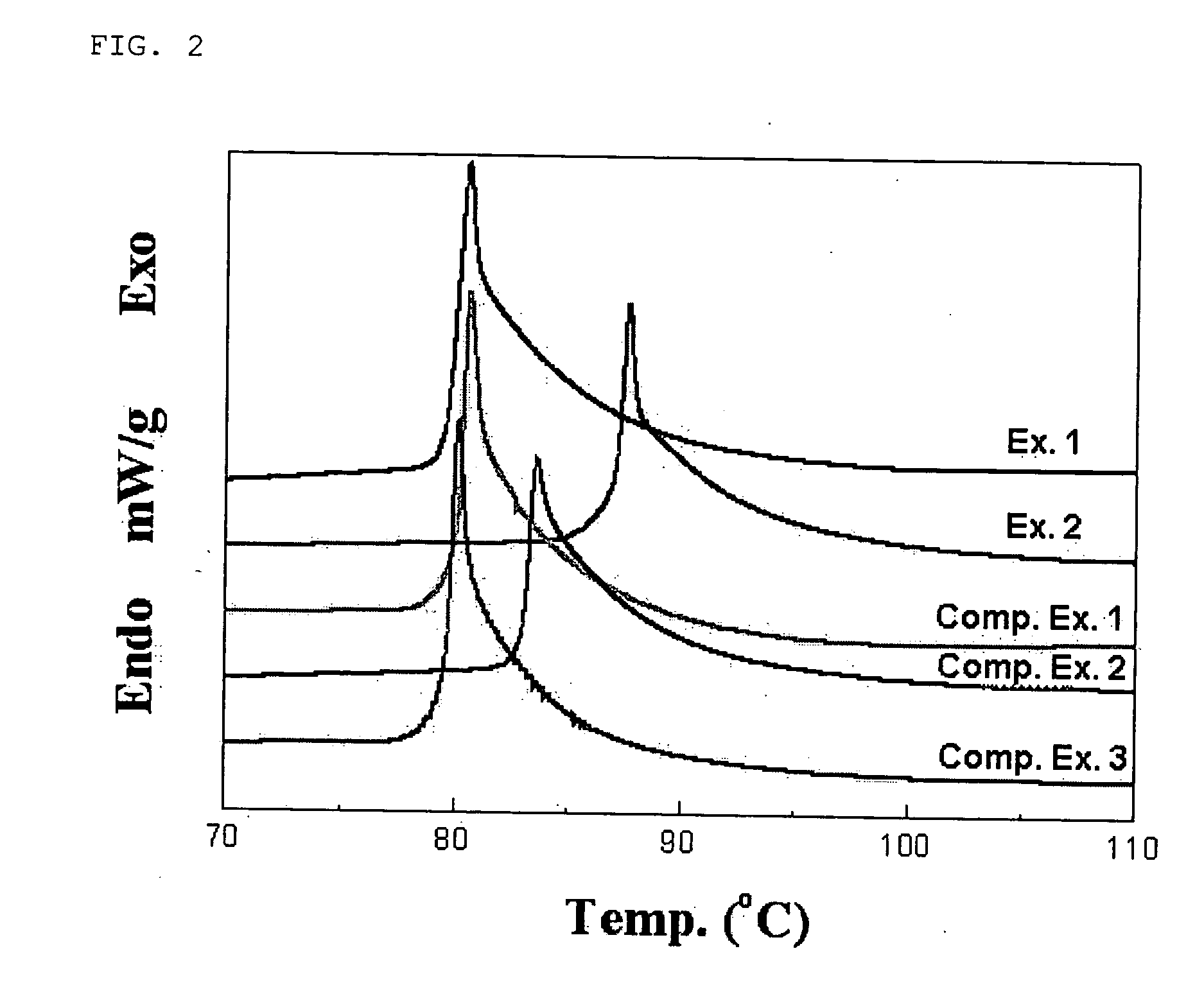Additives for non-aqueous electrolytes and electrochemical device using the same
- Summary
- Abstract
- Description
- Claims
- Application Information
AI Technical Summary
Benefits of technology
Problems solved by technology
Method used
Image
Examples
example 1
[0050] 1-1. Preparation of Electrolyte
[0051] 1M LiPF6 dissolved in a mixed solvent of EC:EMC (3:7) was used as an electrolyte, and the compound represented by the following Formula 4 was added to the electrolyte in an amount of 2.0 parts by weight:
[0052] 1-2. Manufacture of Half Cell
[0053] Artificial graphite was used as a cathode and lithium metal foil was used as an anode to provide a coin-like half-cell in a conventional manner. To the half-cell, the electrolyte obtained as described in Example 1-1 was injected.
[0054] 1-3. Manufacture of Full Cell
[0055] A cathode comprising LiCoO2 and an anode comprising artificial graphite were used to provide a coin type cell in a conventional manner. To the full cell, the electrolyte obtained as described in Example 1-1 was injected.
example 2
[0056] An electrolyte, a half cell and a full cell were obtained in the same manner as described in Example 1, except that the compound represented by the following Formula 5 was added instead of the compound represented by Formula 4 in an amount of 2.0 parts by weight:
experimental example 1
Determination of Reduction Potential of Sulfonate-Based Compound
[0060] Each of the coin-like half cells, obtained according to the conventional manner by using the electrolytes prepared in Example 2 and Comparative Examples 1˜3, was discharged at 0.1 C. to 5 mV. Then, a dQ / dV plot was constructed based the results of the experiment. FIG. 1 shows the plot.
[0061] After the experiment, the half cell of Example 2 using a cyano group-containing sulfonate-based compound as a constitutional element of the electrolyte showed a reduction peak at a higher potential (a lower potential in the case of a full cell), when compared to the half cells according to Comparative Examples 1˜3. Therefore, it can be seen from the above results that introduction of an electron withdrawing group (EWG) causes a change in the reduction potential of a sulfonate-based compound at the anode.
PUM
 Login to View More
Login to View More Abstract
Description
Claims
Application Information
 Login to View More
Login to View More - R&D
- Intellectual Property
- Life Sciences
- Materials
- Tech Scout
- Unparalleled Data Quality
- Higher Quality Content
- 60% Fewer Hallucinations
Browse by: Latest US Patents, China's latest patents, Technical Efficacy Thesaurus, Application Domain, Technology Topic, Popular Technical Reports.
© 2025 PatSnap. All rights reserved.Legal|Privacy policy|Modern Slavery Act Transparency Statement|Sitemap|About US| Contact US: help@patsnap.com



